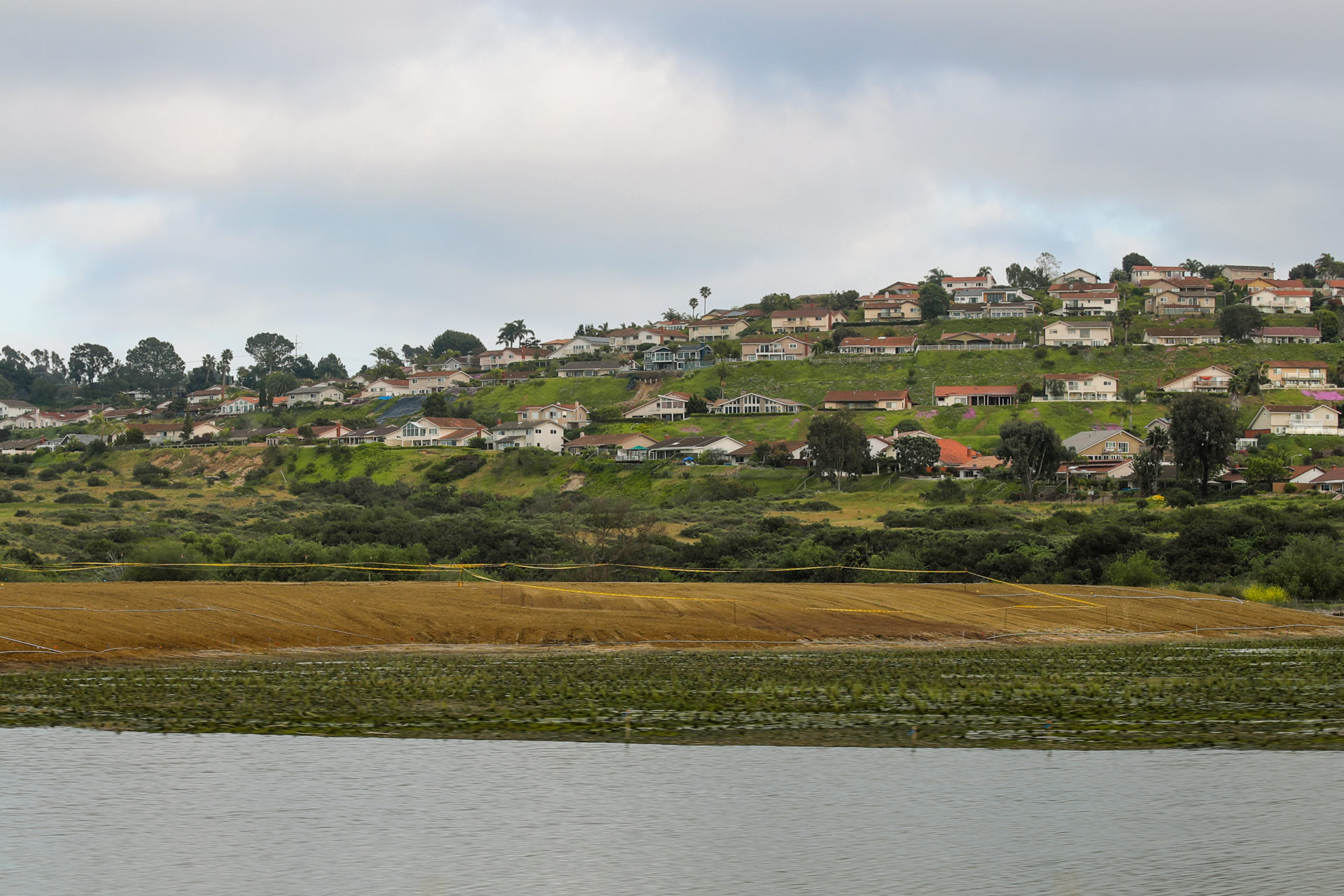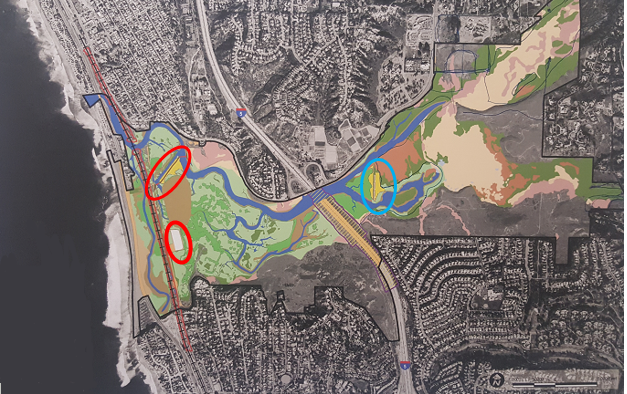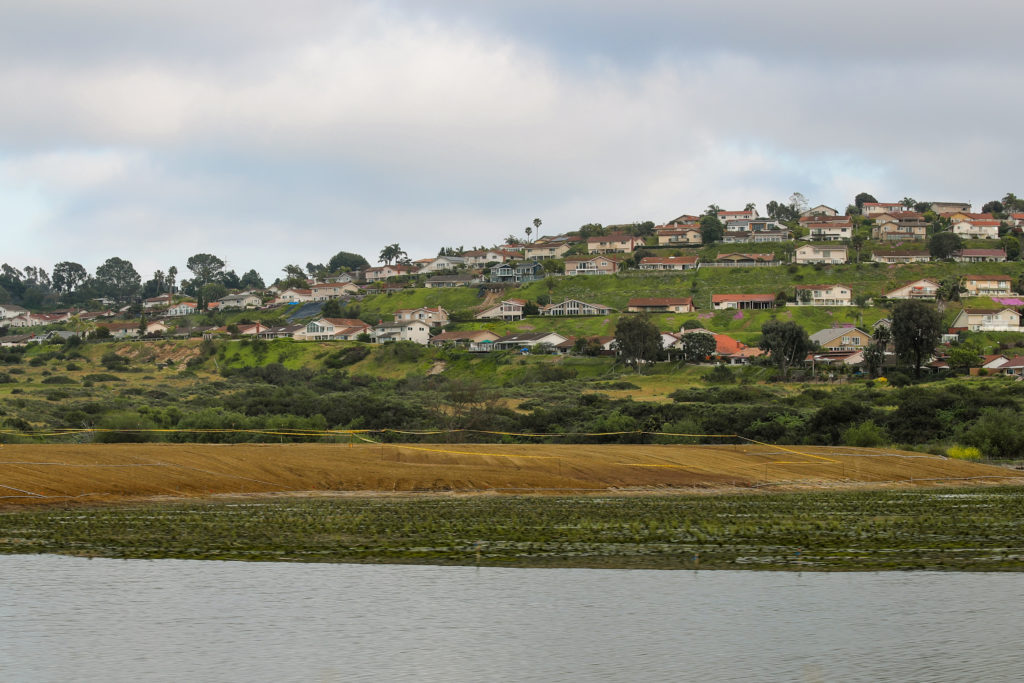Championing Restoration: Hero Spotlight, Joshua Rey
Follow ( 0 Followers ) X Follow E-mail : * Follow Unfollow

The San Elijo Lagoon Restoration Project, deemed essential by State of California, continues. Crews are placing native topsoil on Central basin transitional areas, obtained from a work site north of San Elijo Lagoon Ecological Reserve. The Central basin is the area located between the railroad and I-5.
The native topsoil will help to create an elevated transition area between the two new pedestrian bridges. The soil has the ideal nutrient and sediment mixture needed by our native plants, which are uniquely adapted to thrive in the saltmarsh environment and soils of our region.

Above: Post-restoration habitat map with pedestrian bridge transitional area and nesting island in the Central basin (circled in red) and transition area in the East basin area (circled in blue)

Above: Transition area in the East basin
Why the need for transitional areas? They provide a safe place for Ridgway’s Rails and other species to shelter and wait out storms, high tides, flood flows, and protection from predators.
With sea level rise, the transitional areas will slowly turn into new saltmarsh habitat and provide new areas for plants and birds to access. Areas that are salt marsh today may become mudflats and subtidal areas of the lagoon in the future.
Later in May, we will add more materials to the Central basin area as we prepare to create a nesting island like we did earlier in the East basin. This is ideal habitat for birds like the endangered California Least Tern. Sand for this has been stockpiled onsite along Rios East (Pole Road).
The onsite sand will create a three-foot cap for the final surface of the nesting island. The endangered birds are particular about the land they decide to nest on. They need a clean, sandy area free from people and pets. Something reminiscent of what California beaches and coastal strand habitat looked like before modern times.
The topsoil adds a base so that the nesting island is tall enough for birds to see the island from the coast, over the railroad tracks, when they are flying low. And, that the nesting island is elevated above the adjacent trail. The sand has to be three feet deep to prevent weed growth. Very little vegetation is needed on a nesting island.
The entry location for the topsoil to the Central basin is located at the Rios Avenue access. Work occurs during regular construction hours.
Reviving Your Wetlands, the San Elijo Lagoon Restoration, is expected to complete by end of summer. Stay tuned for more news + views!
Follow ( 0 Followers ) X Follow E-mail : * Follow Unfollow
Follow ( 0 Followers ) X Follow E-mail : * Follow Unfollow